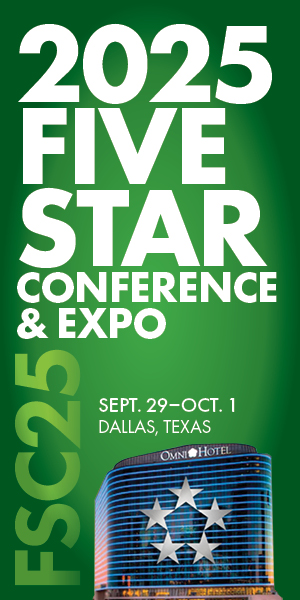This piece originally appeared in the April 2024 edition of MortgagePoint magazine, online now.
The digital mortgage ecosystem promises a consumer-centric data-driven experience that provides convenience for homeowners and loan manufacturing cost savings for lenders.
Fully digital closings should be the status quo, yet they are not. It’s estimated that only 11% of lenders offer complete eClosings.
I’m sure you can pick out a reason for the lack of adoption from your own experience or from one of the many publications on the topic. However, I’d like to offer a perspective on the adoption problem, a perspective that perhaps should never be uttered by someone who works for a digital mortgage technology provider.
What if the very technology firms tasked with streamlining your operations into an eClosing utopia are to blame for perpetuating inefficiencies that make manual, in-person, paper-based processes the preferred alternative? What if our attempt to eliminate process fragmentation through digitization created the need for a nebula of tech solutions that ultimately augment the complexities we were meant to solve?
Successful mortgage closings depend on many elements to go exactly right. Most of the eClosing platforms lenders rely on do not offer end-to-end, soup-to-nuts functionality. This means that somewhere along the line, most lenders, even those who are committed to digital transformation, are forced to rely on manual processes—and dare I say, paper. Not only that, but each of the tools needed to support eClosings often comes with its own fees, integration workflows, contractual headaches, and learning curves.
As revenue tightens and transaction volume slows for lenders, industry leaders such as Diane Tomb, CEO of the American Land Title Association (ALTA), are encouraging lenders to embrace technology solutions that help them further streamline their operations without significantly increasing costs.
In other words, you shouldn’t need multiple vendors and technology platforms to execute a complete eClosing. That’s why all-in-one platforms are positioned as the future of the mortgage world. With a few tweaks—and some more robust technology—we can get closer to the consumer-centric, data-driven experience that homeowners and lenders deserve.
Let’s explore the inefficiencies of the current landscape and consider how to build a more efficient system.
A Single Broken Link Can Disrupt the eClosing Process
A complete eClosing cannot happen unless lenders have tools that can handle every aspect of this process. Most lenders are left patching together solutions from various providers—some legacy and some new. This creates major inefficiencies, duplicative costs, and implementation delays.
Most platforms don’t handle every aspect of eClosing, and that means lenders are often forced to conduct certain steps manually, which results in wasted time and resources.
The digital mortgage ecosystem requires many features to remain truly digital across a loan’s lifecycle. Not having one of these vital features may force you to either bifurcate your processes to accommodate all use case, or opt to go into a paper-based process somewhere along the way:
- eReady loan document set for origination and servicing activities
- Title and Settlement support
- Electronic signing technology
- eNote capabilities
- Electronic vaulting
- Electronic notarization technology for both Remote Online Notarization (RON) and In-Person Electronic Notarization (IPEN)
- Access to mortgage-trained electronic notaries
- Digital default servicing capabilities
Let’s consider a few examples. If your eClosing platform isn’t shared with title and settlement, you could face pushback from your purchase operations team when trying to go digital because title and settlement has its own way of doing things.
When your electronic notarization service doesn’t also include IPEN capabilities, you may need to revert to paper with a homeowner who wants an in-person ceremony, or you may find that you cannot extend the same convenience and digital experience you delivered at closing when your client must sign servicing documents.
The Downsides of a Disjointed eClosing Process Are Tangible
The fact that there are not more solutions that serve all of these needs is unacceptable, counterproductive, and counterintuitive. The drawbacks of a disjointed tech stack can, well … stack up quickly:
- Extra due diligence: Each time you onboard a new platform to your tech staff, you must engage in a lengthy process of comparing options, making sure the new option fits with your existing tech, vetting it through legal, negotiating the service contract, etc.
- Longer implementation: All that due diligence takes time, resulting in additional time that lenders are not spending with their customers.
- Increased robust training: Every new system has its own functionality, user interface, and idiosyncrasies. It takes a lot of time and effort to get everyone in your company fluent in the new tech.
- Higher transactional costs: Assuming some of your platforms charge you on a per-transaction basis, you are losing a percentage of your profit with each addition to your tech stack.
- Diminished innovation capacity: The burden (and frustration) of cobbling together multiple solutions might deter you from innovating your workflows over time. You might find it easier to stick with your flawed status quo tech stack, as opposed to risking any further headaches.
- Unknown per loan cost: Most likely, some of your platforms bill differently, including monthly platform fees, cost-per-document, etc. This makes it difficult to establish a true per-loan cost.
These costs and delays impact the entire mortgage ecosystem—and they are often passed down across all counterparties and the homeowner.
Moving Towards a Single Platform
The mortgage industry needs more from its eClosing tools and technology. Lenders should not have to cobble together various point solutions and manual processes. More comprehensive, all-in-one software will help accelerate the process and alleviate the major pain points.
Let us zoom out for a second. Sure, an all-in-one platform will make the transactional process easier for users, but the impact is much deeper. A more efficient eClosing workflow would help get more people into homes, and get them into those homes much faster.
We all know how difficult it is to buy a home right now. Home sales in September 2023 were at the lowest point they had been in 13 years. As members of the mortgage industry, we should be removing every barrier to homeownership. If more robust, complete tech solutions can help minimize delays and closing costs, we should all be trying to embrace them.
A closing process formerly marked by frustration, disjointedness, and lethargy can soon be defined by efficiency, convenience, and security. Better technology can help enable that transition, and now is the time to prioritize that sort of consumer-friendly tech.










